We are delighted to welcome Pattie Boyd to The Style That Binds Us podcast. Pattie is a Sixties style icon and model who inspired love songs such as “Something,” “Layla,” “Wonderful Tonight” and more. She was at the heart of Swinging London and Rock n Roll as she balanced life between being a highly in-demand model and her marriage to George Harrison and later Eric Clapton. We thoroughly enjoyed reading her 2 books: “Wonderful Tonight: George Harrison, Eric Clapton, and Me” and “Pattie Boyd: My Life in Pictures” and can’t wait to hear all about Pattie’s career, what she’s up to now and more. Listen to the episode on Spotify or Apple Podcasts.
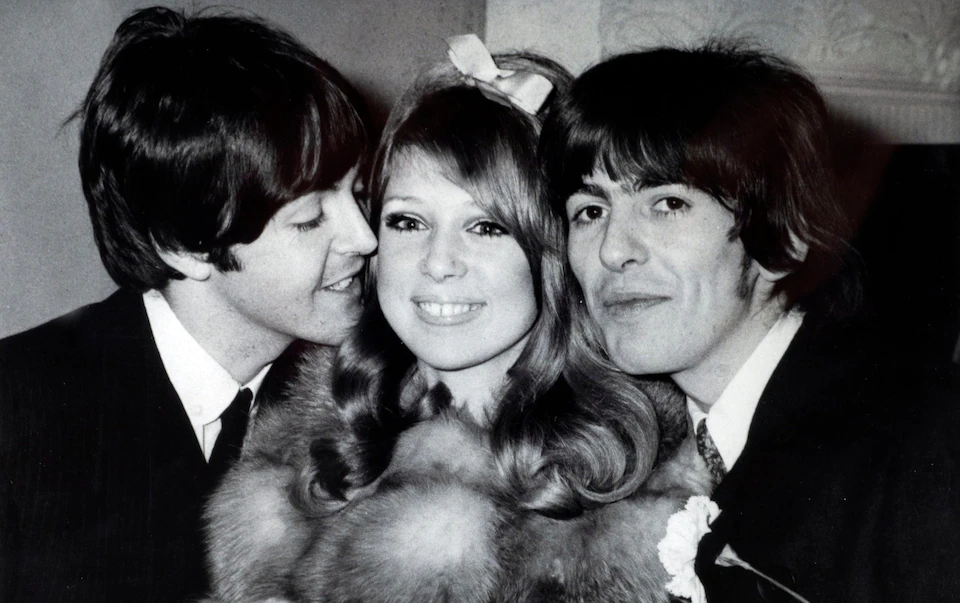
Transcript from the episode
Delia: Hello, everyone. Welcome to The Style That Binds Us Podcast. We are delighted to welcome Pattie Boyd. She is a sixties style icon and model. She inspired love songs such as Something, Layla, and Wonderful Tonight, among others. She was at the heart of swinging London and rock and roll as she balanced life between being a highly in-demand model and her marriage to George Harrison and later Eric Clapton. We thoroughly enjoyed reading her two books, Wonderful Tonight: George Harrison, Eric Clapton, and Me, as well as Pattie Boyd: My Life in Pictures, which we highly recommend, and we cannot wait to hear all about Pattie’s career, what she’s up to now and more. Thank you, Pattie, for being here.
Pattie: My pleasure. It’s really nice to be here.
Delia: For our audience, who may not have gotten to hear all of these fabulous podcast episodes that I’ve been listening to, you were talking about your time as a model. So will you tell us about life as a model in the sixties?
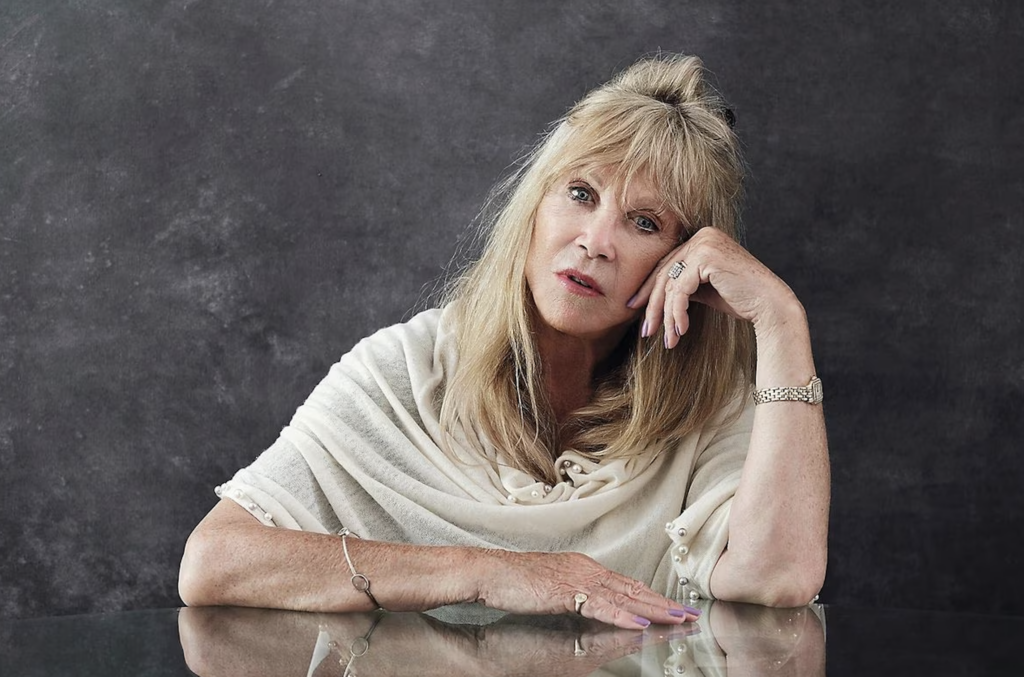
Pattie: Well, it was a very different life to how models are nowadays. We had to do an awful lot of things ourselves. For example, if I have a booking to do, say a shoot for a magazine, they’ll tell me how many pairs of shoes I have to bring. If I had to bring any wigs, like a black wig or curly hair. And with every shoot, I had to bring my makeup, hairbrush, shoes, and jewelry. So you have these great big bags you carry from one studio to another and be ready for a shoot.
Delia: My goodness. And do you have to bring your portfolio as well?
Pattie: And the portfolio because just in case. Occasionally, after one shoot, you might have to go and see another photographer or go for a meeting. So if you have your portfolio with you, you’re all ready to go.
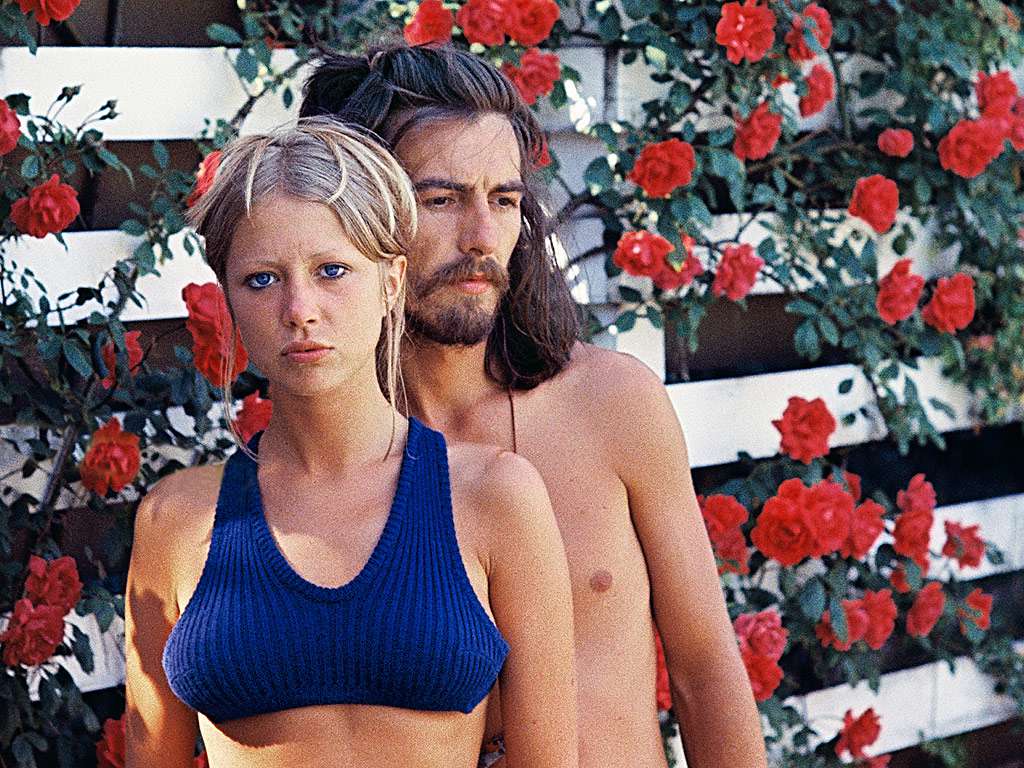
Delia: Oh my gosh. You can see that Pattie is on many Vogue covers from the images in her book, “Pattie Boyd: My Life in Pictures”. That is where you can get the full scoop on those photos.
Alison: I feel like I remember Pat Cleveland talking about that too. Having to bring your own makeup and all of your things with you. It’s so different today, right?
Pattie: Yes. I mean, they’re practically picked up by limousines today.
Delia: Exactly.
Pattie: They have the cars there for them and hairdressers…
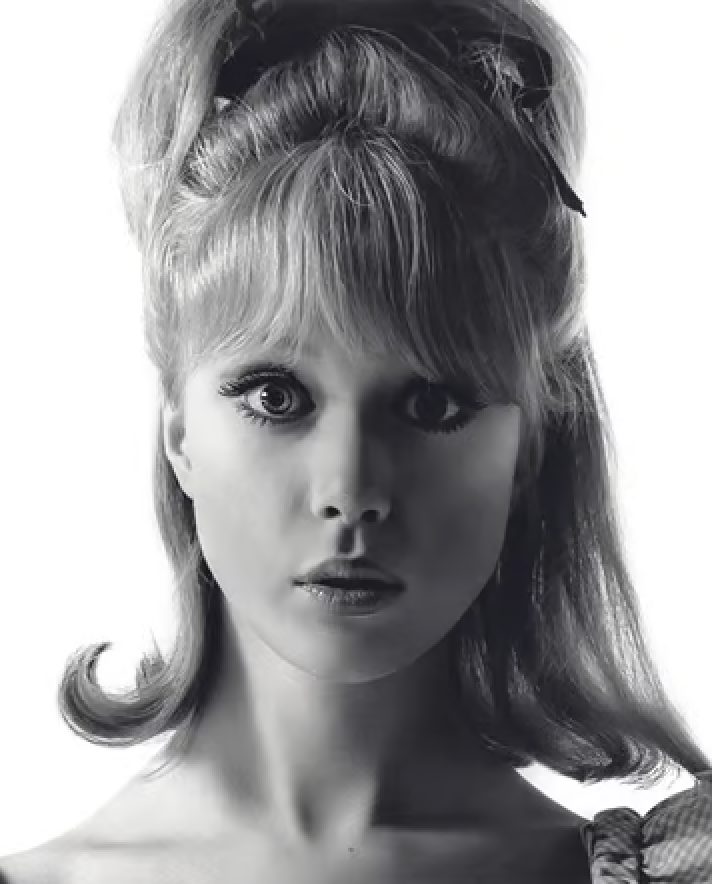
Alison: Absolutely. Will you give us a peek into life in London in the sixties, what it was like?
Pattie: I just felt that it was a time when I sensed there was going to be change. Suddenly I noticed the guys walking on Chelsea, the King’s Road; they were all growing their hair long, and they started wearing more cool clothes. They didn’t necessarily wear jeans. They’d wear different kinds of colored trousers, different shirts, hair getting longer, and I don’t know, there just seemed like a buzz or something in the air. And the girls’ dresses, when we left home, our skirts were like below our knees, and then as time went on, they just got shorter and shorter. And then the trousers came. We had bell-bottom jeans and trousers, and everything just changed. We no longer looked like our mothers.

Alison: That is very interesting because I feel like we’re in another time of trying to figure out what 50 looks like, what 70 looks like. We’re not dressing like our mothers again. So it’s interesting that you all really went through that for sure.
Pattie: Yeah. That was great. Everything was changing. It was like a zeitgeist everywhere. I remember going to Paris to do some modeling work there. And I think Paris hadn’t quite caught up to London. They were a bit shocked at how we looked.
Alison: That is so interesting. I can sort of imagine that. What was the day like in your life then?
Pattie: So I would make sure I woke up at like eight o’clock. And just in case I’d maybe had a couple of glasses the night before, I would put my alarm clock at the other end of the bedroom so I get out of bed to turn it off. And then I’d have a list of studios I had to go to as go-sees or where I had a job. And then off I went, traveling by public transport to get from here to there. Some jobs were really great because I’d be working with other girlfriends or other models, and so we would have fun. It was just a nice thing to do.
Alison: Absolutely. And hard work. I mean long hours, right?
Pattie: Yeah. Long hours. And sometimes, photographers would take a very long time to get the shot they were happy with.
Alison: And then what would you do afterwards?
Pattie: Afterwards, I might go back and see my boyfriend. We’d go and hang out with some girlfriends. Wine bars were just beginning to open up then.
Delia: That’s fun.
Pattie: Yeah. Wine bars and coffee bars.
Delia: So we’ve mentioned this a little bit, but is there anything more to say about this big transition from the twin sets, the traditional style, into this sixties’ fabulous fashion?
Pattie: I think in most fashion cities in the world, Paris is number one because they have all those amazing designers, Balenciaga, Dior, Chanel, etc. And when people think of fashion, they think of those high-end designers. And there weren’t really any in England at the time. Paris dominated them. Except in the sixties, suddenly Mary Quant emerged with these wonderful new designs that were for people who were young.
They weren’t for people who are older with loads of money, which is what Paris designers were for. And so nothing for us, for young people. Nothing really good. And then Mary Quant emerged with the most fabulous designs, the most fantastic clothes. She was really good at doing kind of geometric designs on dresses and matching different colors together.
For example, a chartreuse green with a blue. She was really very talented and clever. So we had Mary Quant coming up, and then behind her was Ossie Clark, who was my favorite designer. His designs were based on the 1940s look.
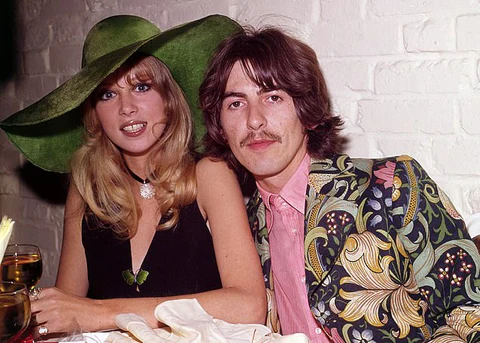
Just a little bit of shoulder, using silk chiffon, sometimes with a pattern, sometimes just a block color. He made women look very feminine, and he would cut fabric on the bias. So if a fabric is cut on the bias, it’s fine for any shape. It doesn’t matter if you have bigger hips or smaller hips or whatever shape. It’s really good. And he was very aware of what he was doing.
Then we had Biba. People would go to London and Kensington High Street, where Biba’s shop was. And you just walk in, the music was so cool. We’d never had music in shops before, and people trying on different clothes and boyfriends were there saying yes or no, and it was just like a place to be. It was a hangout store.

Alison: How much fun. That just sounds fabulous.
Pattie: And then I had a girlfriend called Pat Booth. She was a writer as well as a model, but she’s very entrepreneurial. So she had a little boutique on King’s Road in Chelsea where she would buy clothes from young designers and put them all in her shop. And John Lennon thought the best place would be in Pat Booth’s shop, sitting on the window watching everyone go by. Can you imagine?
Delia: No, that’s hysterical. Did people recognize him? Did it not cause a huge scene?
Pattie: No, it didn’t, because you see, these were early days for The Beatles. Not everyone knew of them or knew what they looked like, and John thought it was fun.
Alison: I bet it was fun.
Pattie: Because all the girls would come and look in the window and look at the clothes
Alison: That is a great story. How did you create your own personal style aesthetic during that time?
Pattie: I don’t know. I just went with what colors suited me. And I think colors are cyclical in fashion. So at the moment, for the end of last year and the beginning of this year, I was madly in love with brown, like a cappuccino brown. I thought it was wonderful, and I realized so many other colors go with brown except for blue. So I would base my style and my clothes on my choice of colors and then other colors that go with them.
Alison: Great idea. A lot of people try to put blue with brown, and it really doesn’t work.

Pattie: Hurts my eyes.
Alison: Yes, I totally agree.
Delia: There’s the funniest photo in your book. My Life In Pictures with The Rolling Stones and Mick Jagger. It looks like he’s about eight years old in that photo.
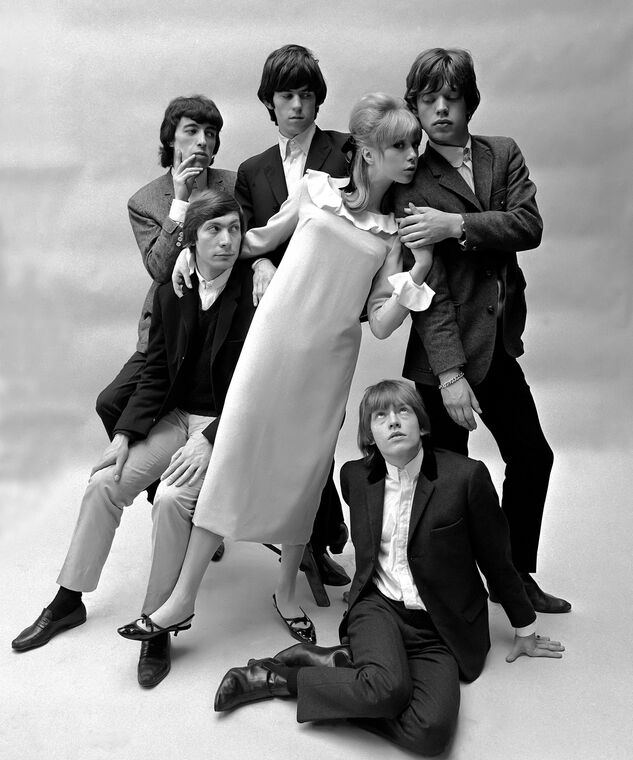
Pattie: Sometimes you have to wear the most horrible clothes. And if you look at that photograph again, you’ll see the skirt is a length that, in my dreams, I would never wear. And I thought later, “God, why do I have to wear that dreadful dress when I meet The [Rolling] Stones?” Ridiculous! In a way, it was quite similar to when I first met The Beatles when I was chosen to be in the film Hard Day’s Night. I had to wear a school uniform. Who meets famous people in a school uniform? That happened to me.
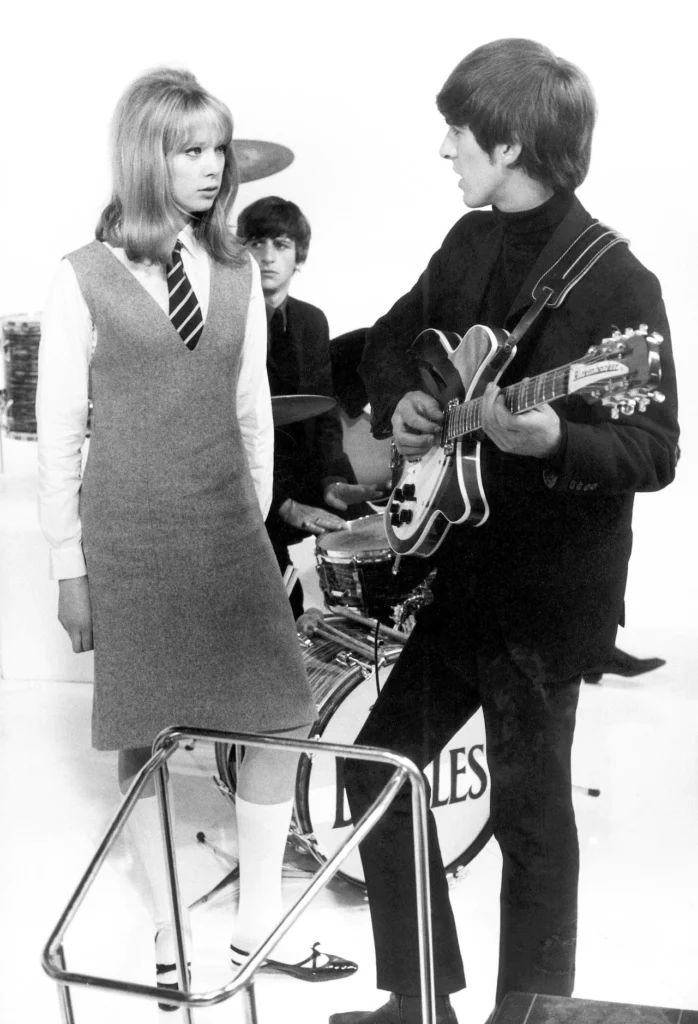
Alison: Well, I don’t think it mattered.
Delia: It did not.
Alison: So when you were moving from the sixties into the seventies, how did your style change between those decades?
Pattie: I think my style changed, and it became a little more sophisticated, not hippie-ish. And it was all more put together, more thought of. For example, I started liking jackets with a proper sleeve, nicely cut shoulders, and a little sharper. And trousers. My trousers became straight and not flared.
Alison: A little more sophisticated.
Pattie: Yeah. And then I started wearing maxi coats, a coat that goes down past the calf, which is really good with trousers underneath. We weren’t wearing long dresses then.
Alison: I think maxi and duster coats are back again this year.

Pattie: I like them. I think it’s nice for summer as well. You can wear a dress the same length maybe. Also, now obviously I can wear a long skirt with a duster coat over it.
Alison: Yes. I love that look too. For sure.
Delia: Did you ever get to keep the clothes that you were modeling if you did like them?
Pattie: No. Occasionally, they would say, “If you really want it, you must get in touch with the manufacturer and buy it.”
Delia: Oh, wow.
Pattie: Sometimes I thought that was wasting too much time. I’m onto the next thing unless it was really special.

Delia: For sure. Okay, let’s talk beauty. What was your beauty routine? You were a fabulous model creating all these iconic images in the sixties and seventies.
Pattie: First thing is removing my eye makeup, then removing makeup on my face and neck, decolletage, toning the whole thing and then putting night cream on. And then in the morning, sometimes there’s a little bit of dark under my eyes, so I clean all that off. Wash my face with hot water and a flannel. And then splash cold water to get the pores back to close. And then some day cream.
Alison: And is that now or then?
Pattie: That was then. Now, I have to wear a little bit of skin tint, which is not as thick as a foundation, which I find too thick. I also find that it goes into the cracks. So tint, I really like it because it’s light and it gives you a little bit of color.
Alison: Yes. I like that too, very much. Delia’s not quite there yet
Pattie: It’s so sad, but there’s nothing we can do to stop it. You know, magazine after every magazine, everyone says, “Oh, get rid of your lines.” I’m sorry. Once it starts, it’s all too late.
Alison: That’s right. It’s inevitable. So did you ever share clothes with George or Eric?
Pattie: I think I might have worn some of Eric’s jumpers because he always had great jumpers. He was quite a snappy dresser.

Alison: Really?
Pattie: Yeah. Sometimes I’d wear my brother’s [clothes] growing up. It was my brother next to me, and I’d wear his jumpers sometimes, and he’d always know. Even though I fold them back and put them in his drawer, he’d know because my breasts gave the game away.
Alison: You didn’t get away with it.
Delia: Oh, that’s hysterical. You were one of the most stylish women in the sixties, and also, you were friends with the most stylish people at that time. So did y’all get inspiration from each other? Style inspiration, outfit ideas?
Pattie: Twiggy and I became great friends at one time, and we go on holiday together with our husbands. She and I used to copy each other with makeup. One time, we did a session for Italian Vogue. Justin was taking the photographs, and we copied each other. We started with a brown pencil, dotting little freckles over our faces, which were kind of cute at the time, but not to smudge it, you know? I mean, I used to lend my clothes to all sorts of people. Sometimes I’d get them back, and sometimes I’d forget who I’d lend them to.
Alison: It’s interesting too, when you’re younger and when you’re around other women and you pick up this mascara that they love or this look that they love, or this designer or brand or little store or whatever. And when you’re older, you’re not necessarily around as many other women to have that kind of girl time.
Pattie: Yes. And sometimes, even now, I see a girl wearing something, I would say, “Oh God, I love that.” Ask them where they got it from, and after I would buy it, it looks shit on me. It looked great on her, but she has different color hair

Alison: Exactly. Different body type. Yeah.
Pattie: It doesn’t always work.
Alison: You’re definitely right about that. You were part of a revolution, basically, right?
Delia: The Revolution.
Alison: The Revolution. What was that like?
Pattie: I think I was very aware of it because I started meeting all these extraordinary people who were very creative, obviously, fashion people. Designers and hairdressers started to become quite cool, and they were doing interesting things with hair like Vidal Sassoon cut Mary Quant’s hair in such an amazing way. And then Leonard [of Mayfair] cut Twiggy’s hair really short. Anyone in the creative world was doing wonderful things. Painters like David Hockney, we’d hang out with him, and he’d show us the most amazing paintings that he had done. And then music, of course, I’d hang out with The Stones or The Beatles, and we’d pop into their recording sessions. Everybody seemed to know each other, but it was cool. Nobody was hysterical. Maybe we behaved a little badly by just turning up, but it was all fine. Somehow we were fine. Everyone looked amazing. We had a joy and happiness going.
Delia: Oh yes. During Omicron and that whole new wave, Mom and I watched The Beatles documentary, which you are in. You do make an appearance. I don’t know if you have seen it yet.
Pattie: No, but I did see one little bit where I walk into the studio, I think. I probably told George what we were having for dinner and then walked out.
Delia: It was actually called Get Back. Oh, that’s so funny. Okay, let’s talk about advice for future generations or generations now because now is such a tumultuous time, but it’s so different from this revolution you were a part of in the seventies. So what is your advice for people today about making the change that they want to see?
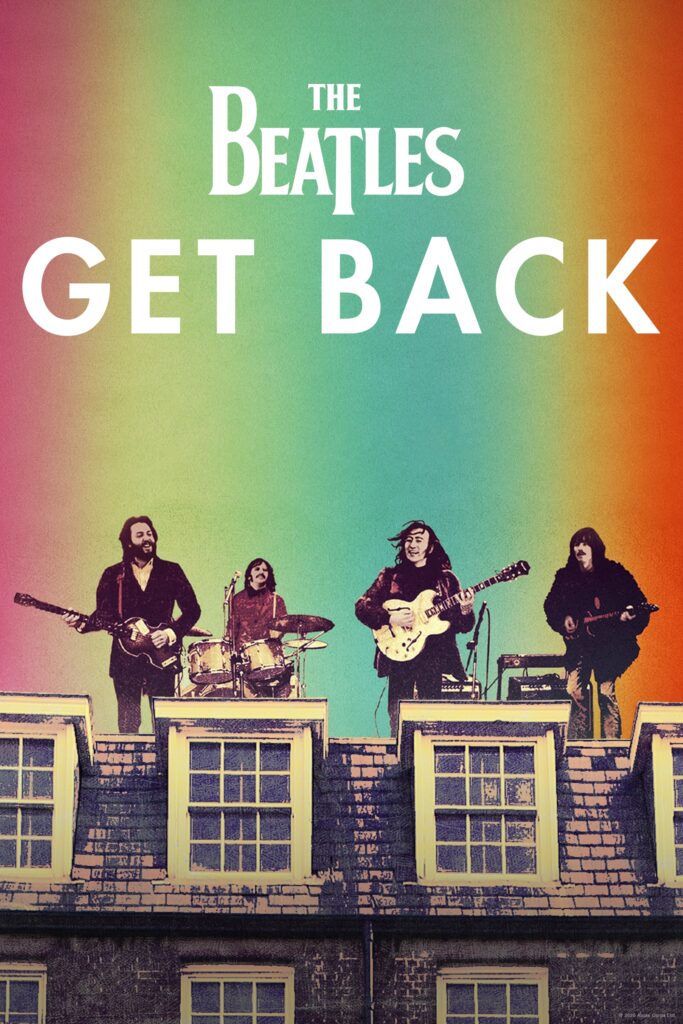
Pattie: In a way, I feel slightly disappointed now because I felt that we, in the sixties and seventies, fought for our freedom, which we didn’t have at the time before we broke away. We created a freedom for ourselves and the way we thought, the books we read and the music we listened to; it was all breaking away from our parents.
So now I feel that younger people don’t want that freedom. Anything makes them nervous and upset. And they’re so easily upset. I worry about them. I want them to be brave. In order for anything to change, for any way to get what you want, you have to be brave. Taking that one step of bravery in your life will set you free because, from there, once you’ve done it, you’re on the way to a great and fabulous life.
Alison: That’s really true. It just takes practice. If you can just make that leap.
Pattie: Absolutely. Don’t be afraid. I feel everyone’s so frightened and so nervous. I’m sometimes worried about what I can say. Am I allowed to say this or that, or will it be misconstrued?
Alison: Right. Seriously.
Delia: And Pattie, will you share how you think about life? I was listening to one podcast, and you were talking about not sitting there, going after it, all the energy and everything. So will you give us some insight into how you view life and how you go about it?
Pattie: I don’t know what comes over me, but I suddenly have waves of inspiration. I suddenly think I must know and learn how to cook, so and so. For example, a vegetable I hadn’t thought of for years. I must investigate this vegetable and make it taste incredible. Do you know what I mean?
I love to suddenly surprise myself as well. And so cooking is something that I really love to do. I also love taking photographs. I am a little lazy, however. I don’t always use my proper big camera because my iPhone is perfect and can take lots of nice photographs.
And I like gardening. Now, in a bit of a hurry, I created a vegetable garden, and I planted all sorts of things- cauliflowers, carrots, onions, leeks, artichokes and all sorts of things. Anyway, I did make a mistake because I hadn’t read the instructions. I planted the carrots too close to each other, so it looks like instead of pulling out one carrot, I’ve got a family of carrots. It looked like a piece of sculpture.
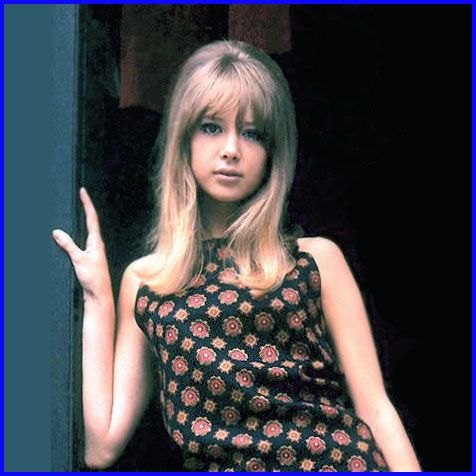
Alison: Oh my gosh, that’s so great.
Pattie: There’s always something more to do. There’s always something to improve on.
Alison: Yes, I agree with you.
Pattie: It could be a joy to find out what’s wrong and how I can make it better.
Alison: I’m so impressed with the artichokes and everything. That’s a lot.
Pattie: Love it. And sweet corn. My sweet corn is quite big.
Alison: Oh, yum. That’s great.
Pattie: I’m surprised they grow in England anyway.
Alison: I know. Same.
Delia: Yes. Pattie even started a podcast during Covid because she had so much energy. What was she to do? So she created these cooking episodes.
Pattie: Yeah, I did. Lockdown Lunches, they were called.
Alison: Oh, that’s wonderful.
Pattie: Yeah. So I’d make all these great lunches just for Rod. No one else around, obviously. It was a lovely summer, and I’d photographed them.
Alison: Oh, that’s wonderful.
Pattie: Watch Lockdown Lunches for anyone who’s bored and doesn’t know what else to cook.
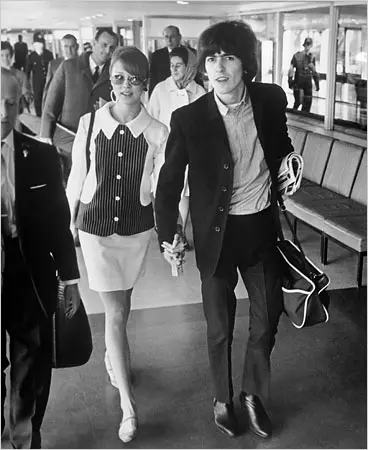
Alison: And you got to be creative.
Pattie: Exactly. Yeah.
Alison: What was it like on set, like when The Beatles were recording? Were you able to be a part of that? And what did you wear?
Pattie: I can’t remember what I wore. My only memory was in the studio twice when they were recording. Is this what you mean?
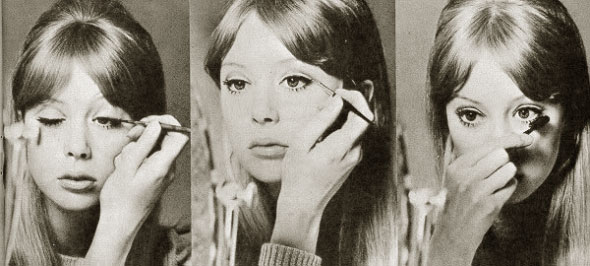
Alison: Yeah.
Delia: Or concerts.
Pattie: I sang on Birthday.
Delia: Yes, you did. And there was another one, Yellow Submarine.
Pattie: Yeah, that’s right.
Alison: Oh, that’s great.
Pattie: That’s fun. Yeah. It was fabulous. Great fun.
Alison: That’s wonderful. Did you go on set when Eric was recording?
Pattie: I think I might have, yes. I was probably in the control room when he was recording once, I remember being in Jamaica. It was really fun going on tour with Eric. That was fantastic because I would stand at the side of the stage so I could photograph him and his band and see the audience that was ecstatic. It was amazing to be there.
Alison: Listening to the songs about you, written for you.
Pattie: I know. Remarkable.
Alison: It’s remarkable.
Delia: Because The Beatles, you didn’t get to go really, except maybe if it was a concert for charity or something.
Pattie: No, darling. I didn’t even. I only saw The Beatles on stage once. Do know the security was just enormous. It was going to be a nightmare. So the one time I did go was in London at a place called Hammersmith, and George told me and my friends the last number we should listen to before leaving. Because it wasn’t going to be the last, they would be playing two more. We sat quite near the emergency exit. At the right time, we got up and left, but a bunch of girls saw us, and they followed us down this nasty little kind of corridor.
It was quite dark, and they were kicking me and pulling my hair. And so one of my friends, the car was on the opposite side of the road, and he said to me, “Just run, and I’ll start the engine. Just run, and we’ll go.” That was pretty scary. All I could think was, why are they doing this to me? They don’t even know me.
Alison: And they were doing it because they were jealous of you?
Pattie: I suppose so. I guess they must have been jealous, or they didn’t see why I should be going out with George and wasn’t with them, I suppose. You know how girls can be.
Delia: So Pattie, I loved reading your book, “Wonderful Tonight: George Harrison, Eric Clapton, and Me”. The whole book, but especially the epilogue, I was wondering how it was going to end and where it was going to end. So I wanted to talk about the fact that those powerful and beautiful love songs put such immense pressure on you to be perfect. You felt like you needed to be.
I thought that was really fascinating, and it opened my eyes to the weight of it at the same time instead of being this huge, incredible compliment. So will you walk us through, after leaving both marriages, how you went about discovering and rediscovering yourself?
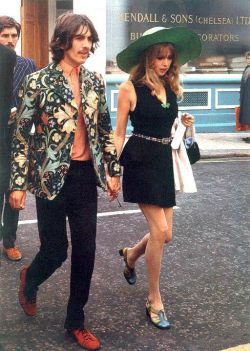
Pattie: I went into such an emotional decline because I thought, without being Mrs. Famous George Harrison and Mrs. Famous Eric Clapton, who am I? I got lost. Without the weight of the fame and the well-known names surrounding me, I felt empty. I didn’t know who I was. This is the time I went to see somebody professional who could help me and build me back up again. One thing she said, which I’ll never forget, was, “Pattie, always buy yourself a bunch of flowers.” What a thing to say when you’re feeling depressed and lonely and like a nobody to buy yourself flowers. It is an amazing thing to do. It’s a very powerful thing to do.
Alison: Yeah, that’s so true. And it’s so simple.
Pattie: So simple.
Alison: And it’s so emotional.
Pattie: Absolutely. Previously I thought, “No, why would I waste flowers on myself?”
Alison: Exactly. Who’s going to see them but me?
Pattie: Yes.
Alison: Wow. I’ve been through two divorces as well, and I know how painful that is. But do you feel like, from talking with the therapist and everything, did you start a new path of self-discovery and maybe become someone that you might not have ever been if you had stayed?
Pattie: Oh yeah. Because this is a prime example of being brave and taking that big step. It couldn’t kill me. And it’s actually freeing to realize that you’ve got no one to answer to actually. And then you begin to know yourself better. And you can have those wonderful times when you are on your own. Don’t read a book, don’t do anything. Just see where your mind takes you and what it starts thinking about, not provoked by anything at all. And that is interesting.
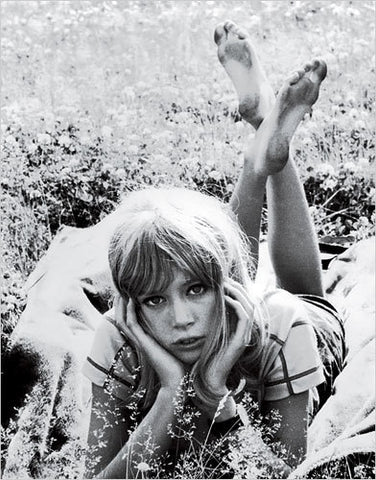
Alison: It is interesting. And you get to garden and cook and do all of these things that bring you joy, and those were probably not things that you were doing when you were married to those musicians. But I still think, those songs aren’t just special songs at the time. They’re songs that bring me back to my high school and junior high. And when you still hear them, they’re very emotional songs. Those are some of the most famous songs ever. And so what is it like when you hear those songs now?
Pattie: I feel so close to them to a point where they’re part of my being.
Pattie: Come in, Steven. I’ve got a friend for you to meet.
Steven: Hi, how are you?
Delia: Hi Steven. Nice to meet you.
Steven: I found some photos that popped up on Facebook. They’re pictures of you.
Pattie: No.
Steven: Yeah, when you were talking about the sixties with the Rolling Stones.
Pattie: Show me.
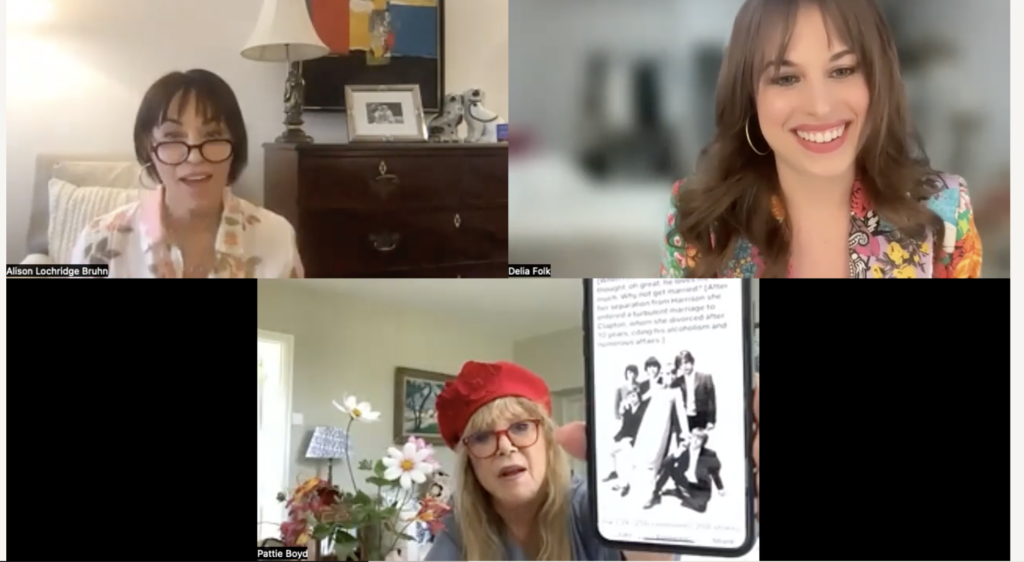
Delia: We’ve gotta see it.
Steven: And there’s a picture of you and George.
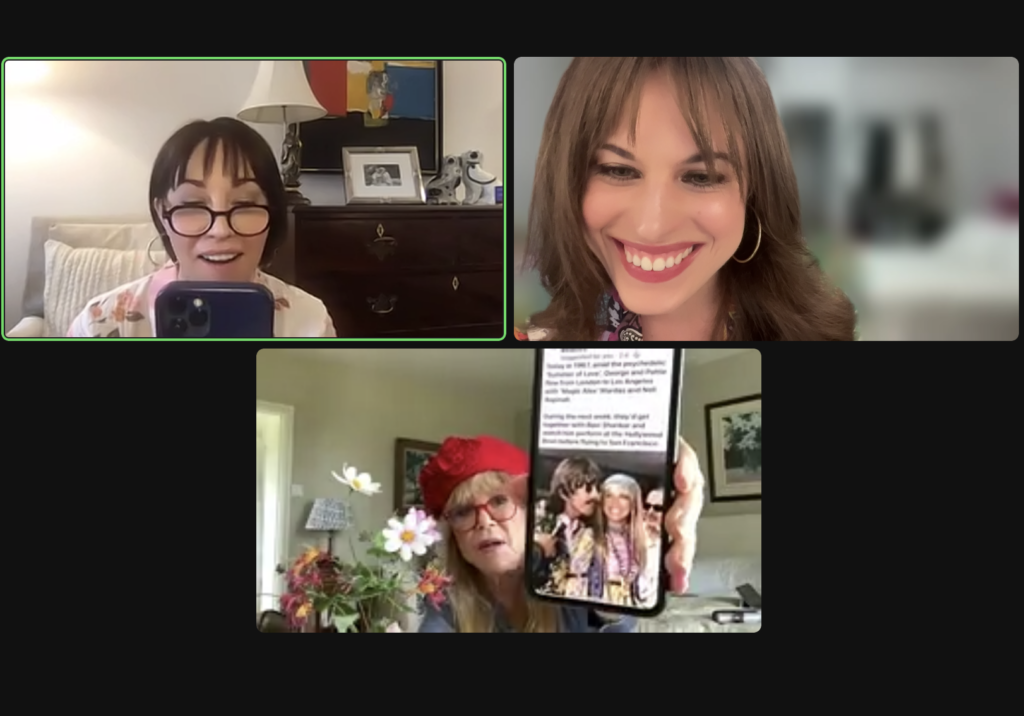
Pattie: How funny when we are doing this [interview].
Delia: Right?
Alison: I know. I can’t wait to see it.
Pattie: No more can I.
Pattie: Here’s the photograph I was telling you about. Can you see it? That’s the horrible dress.
Alison: Wow. That is so cool. Was it a longer dress?
Pattie: Yeah. Horrible. And then this is nice.
Delia: That’s so cute.
Alison: Oh, that is so cute.
Delia: I love that outfit you have. I haven’t seen that photo.
Pattie: Nor have I.
Delia: Oh, you haven’t?
Steven: The date is 1967. Only a few years ago.
Alison: So it just popped up on Facebook today in 1967?
Steven: Yeah, it just popped up on Facebook. I don’t know why. I think because potentially, we being on Facebook with Jimmy Page and then all that, people link up things suddenly, and then it all kicks off.
Pattie: Oh, I see.
Steven: There was that picture of you and Jimmy Page.
Pattie: That’s right. Yeah. We just saw him for lunch the other day.
Alison: We want to know what’s next for you.
Pattie: I think it’s about time I started winding down all the work I do, i.e., you know, photographic exhibitions. In a way, I’d like to sell my entire archive and not do it anymore. It is exhausting. In the last [years], I went to New York, New Jersey, Miami, Japan, and Greece. It’s exhausting. I can’t totally relax. I would just like to be calm and not have so many commitments.

Alison: What would that even feel like?
Pattie: Suddenly, the day is gorgeous, I’m going to take off and go down to the […] or catch a plane to Ireland or…
Alison: Yeah, that’s good advice to all of us.
Pattie: Thank you very much. It’s been so nice to meet you both.
Alison: Absolutely. You too.
Alison: All right, have a wonderful weekend and thanks again.
Pattie: You too. My pleasure. Really nice chat, I think we’ve had.
Alison: Yes, absolutely.
Delia: Thank you for tuning into this episode on The Style That Binds Us podcast. If you like this podcast, make sure to tell a friend and subscribe. You can be a part of growing with us. Also, do you know about our weekly newsletter? You’ll get access to exclusive content in our newsletter that we don’t post anywhere else.
Alison: Our newsletter comes out every Tuesday with the exception of the third Thursday of the month for Alison’s special, Celebrating Life After 40 edition.
Important Links
Connect with Pattie Boyd
Books
Songs
- Something by The Beatles
- Layla by Eric Clapton
- Wonderful Tonight by Eric Clapton
- Yellow Submarine by The Beatles
- Birthday by The Beatles
People
- David Hockney
- Eric Clapton
- George Harrison
- Jimmy Page
- John Lennon
- Leonard of Mayfair
- Mary Quant
- Mick Jagger
- Ossie Clark
- Pat Booth
- Pat Cleveland
- The Beatles
- The Rolling Stones
- Twiggy
- Vidal Sassoon
Brands
About The Guest
Patricia Anne Boyd is an English model and photographer. She was one of the leading international models during the 1960s and, with Jean Shrimpton, epitomized the British female look of the era.
The Style That Binds Us
BY
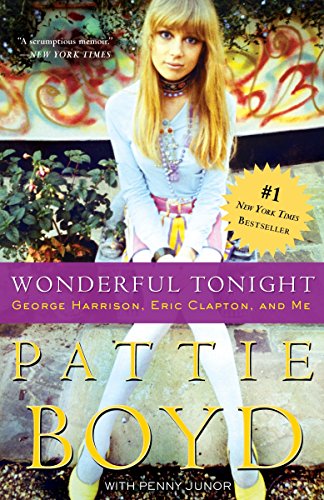
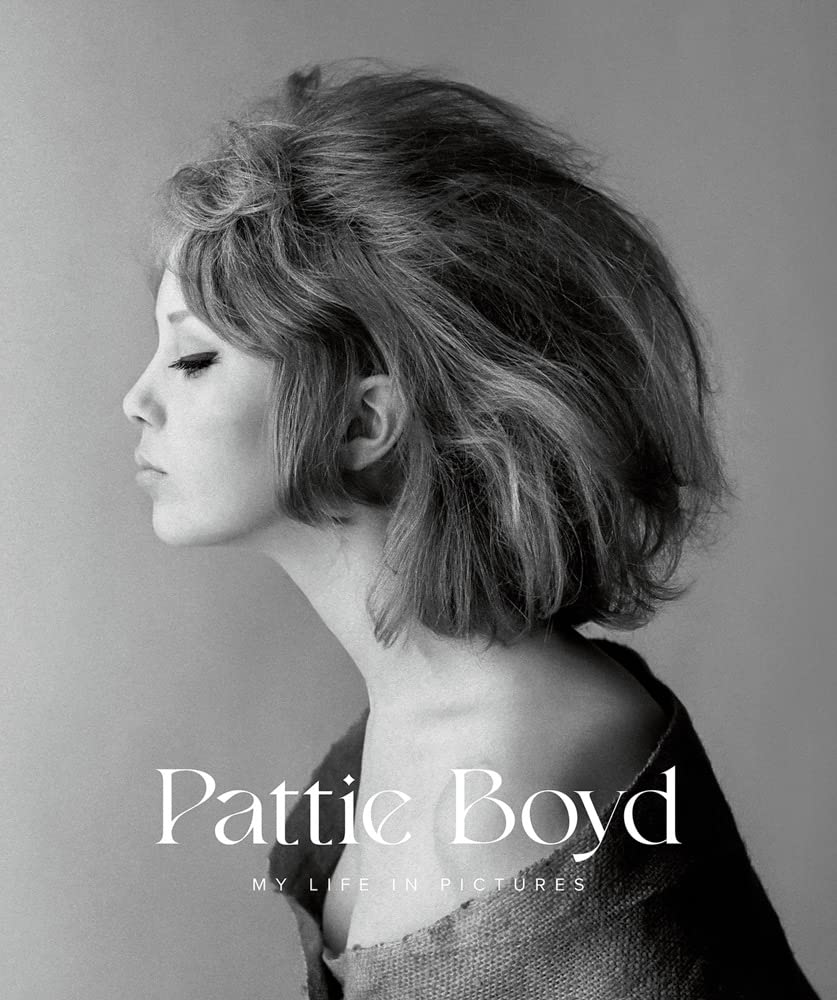
W-O-W! Gobsmacking fascinating fashion. REAL STYLE tips from those who set the global scene. LUV your insights from the who’s who. Thank You!
So happy to hear!